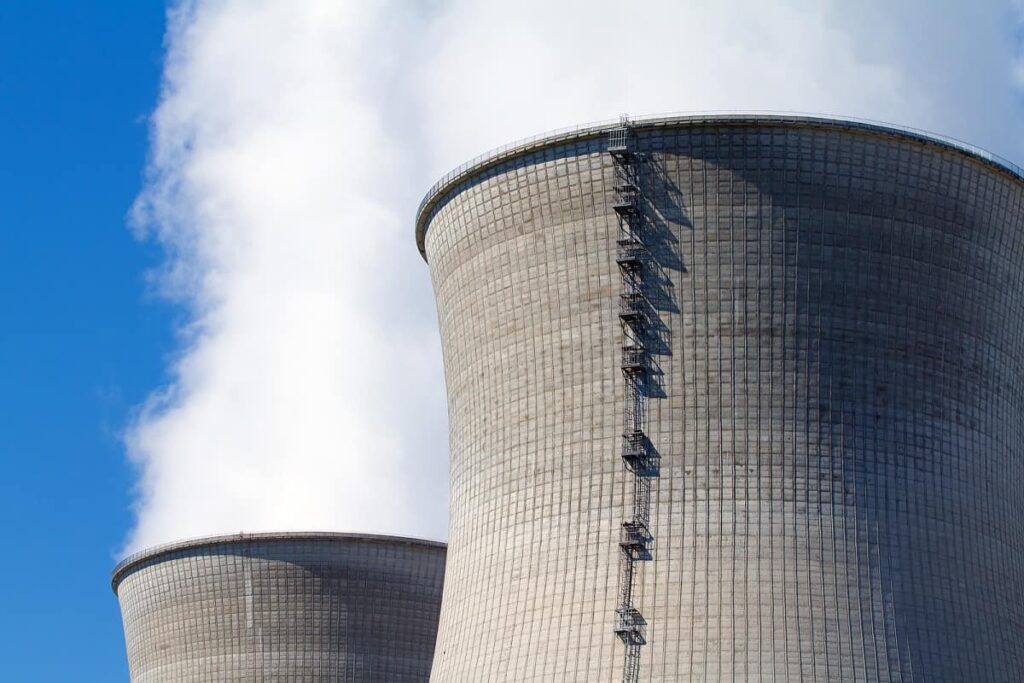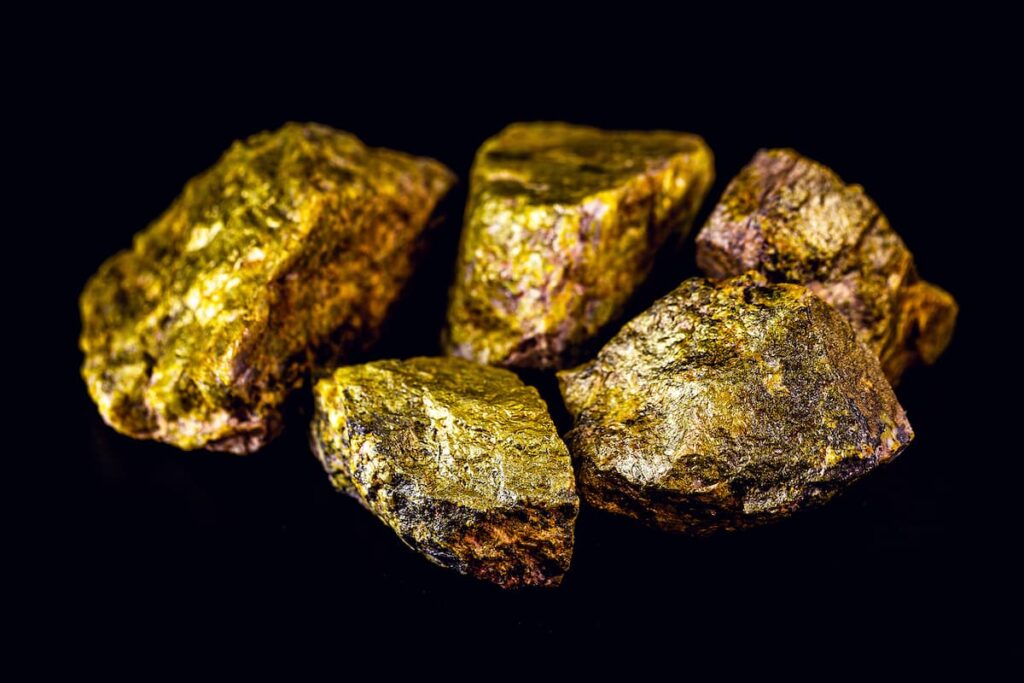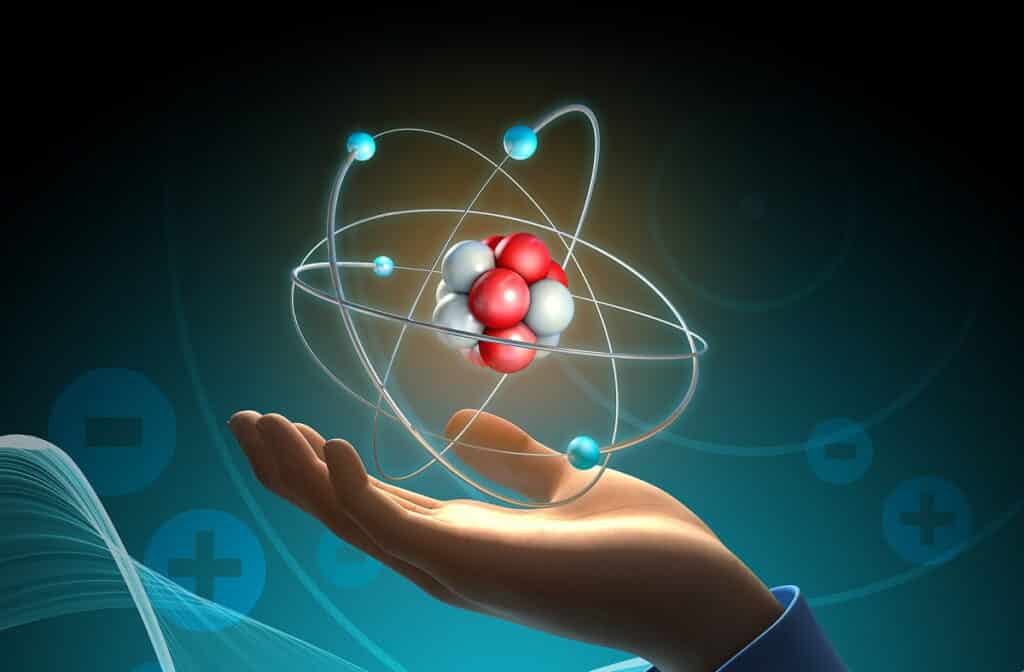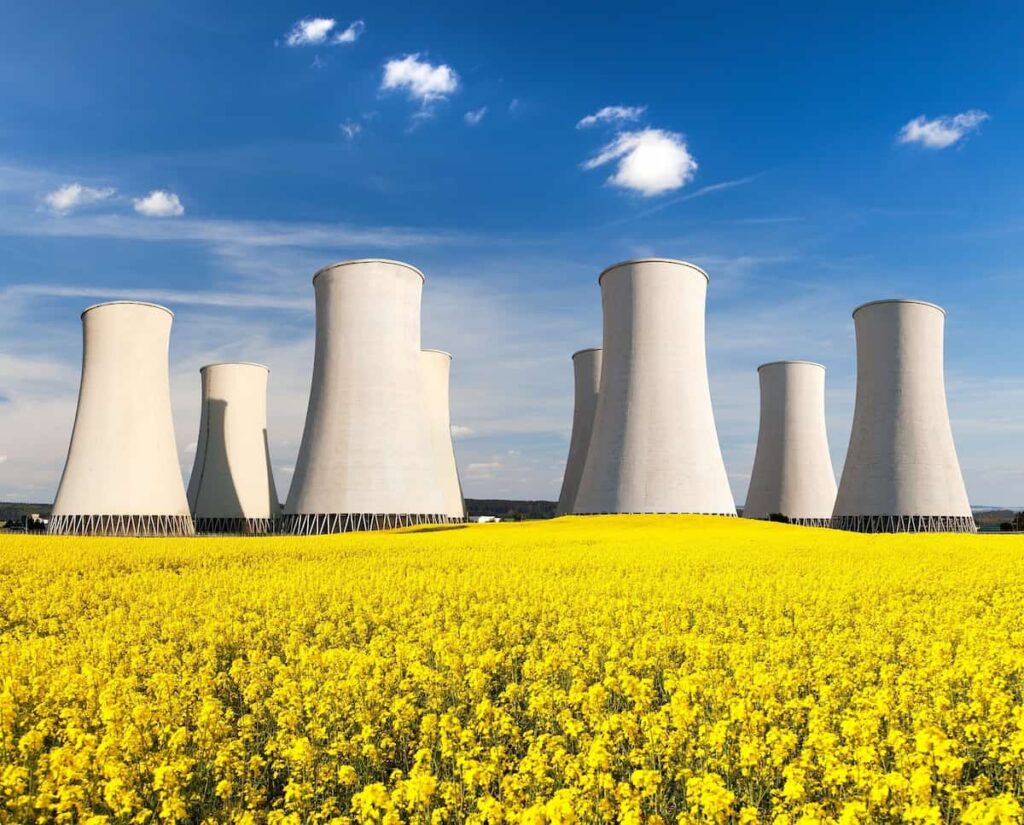NuScale Power Stock for Investing in Nuclear Energy
Table of contents

Quite a few of our lovely readers are interested in investing in green technologies, particularly renewable energy stocks like solar, electric vehicles (EVs), battery storage, and more. Over the last 18 months or so, it’s become much easier to find these kinds of stocks thanks to the proliferation of special purpose acquisition companies (SPACs). These so-called SPACs are shell companies that raise hundreds of millions of dollars with the intent of merging with a startup or private company. Many SPACs target immature or niche technology sectors where most companies aren’t really ready for prime time, such as EVs. Not surprisingly, many SPAC stocks have crashed and burned retail investors.
But still they keep coming. One of the latest companies to announce its intention to merge with a SPAC is NuScale Power, an advanced nuclear technology company developing small modular reactors (SMRs). Nuclear power currently accounts for about 10% of the global electrical supply, according to the International Energy Agency. In the United States, the total is closer to 20%, according to the U.S. Energy Information Administration, about the same as all renewables combined.

Most experts agree that renewables alone can’t fully decarbonize the global economy. While nuclear has a bit of a PR problem, due to both perceived and real challenges, it is a low-carbon option that ESG types shouldn’t entirely dismiss. Our energy future will likely tap a mix of renewable and low-carbon sources that prove to be the most cost competitive. One way to figure that out is through calculating the levelized cost of energy (LCOE), which measures the “average net present cost of electricity generation for a generating plant over its lifetime.” We won’t pretend to understand all of the factors that go into making these estimates, but it offers a useful baseline comparison:

As you can see, nuclear power currently isn’t the cheapest or the most expensive. But the new generation of fission-reactor technologies promises not only to be safer and produce less nuclear waste, but to cost less to build, operate, and maintain. At least that’s one of the big selling points behind NuScale Power’s SMRs.
About NuScale Power Stock
Founded in 2007, Portland-based NuScale Power actually got its start more than 20 years ago at Oregon State University. That’s where Dr. Jose Reyes, co-founder and chief technology officer of NuScale Power, first started working on the concepts that would lead to a new type of small light-water nuclear reactor that could be deployed virtually anywhere. The company says it has received nearly $1.4 billion in funding, with the Department of Energy (DOE) providing lots of grant money ($500 million and counting) along the way. An early, key investor is Fluor Corporation (FLR), a $4 billion market cap engineering and construction firm that will retain about a 60% stake in the new company if the proposed merger with Spring Valley Acquisition Corp. (SV) goes through this year.
The deal would value NuScale Power at about $2.3 billion, based on post-money equity, which would include about $413 million from the deal with SV. That’s not bad considering that NuScale is projected to generate just $16 million in revenue this year. Before we pick apart the financial picture, let’s understand a bit more about what NuScale is developing and why it’s potentially a big deal.
Small Modular Reactors
The company is ready to begin commercialization of its NuScale Power Module, a 76-foot-tall SMR that can generate 77 megawatts of electricity. There’s no fancy metal or exotic fuel, yet the module eliminates the need for two-thirds of the safety systems and components found in today’s large commercial reactors. The reactors are designed to safely shut down in an emergency and indefinitely self-cool, with no need for operator or computer action, power, or the addition of water – reportedly a first for any commercial nuclear power plant. In fact, the containment module is nothing more than a four-inch-thick pressure vessel. For comparison, about 120 NuScale power modules could fit into the containment chamber of a large gigawatt-size reactor.

The U.S. Nuclear Regulatory Commission gave its stamp of approval to the technology in 2020. More recently, the company unveiled its VOYGR power plant design, which can accommodate configurations of four, six, and 12 modules. The largest can provide up to 924 megawatts per day of electricity – enough to power about 700,000 homes in the United States – at an estimated cost of $3.3 billion. A large-scale nuclear power plant can produce about twice as much power but at more than three times the price, and requiring an order of magnitude or more of real estate. The idea is that you can plop these things down just about anywhere, including the middle-of-nowhere Idaho.
Just One Customer
In fact, that’s exactly where the first commercial power plant using small modular reactors will be located. Utah Associated Municipal Power Systems (UAMPS) – a nonprofit utility of sorts that provides various power services to Utah, California, Idaho, Nevada, New Mexico, and Wyoming – is building a 462-megawatt plant in Idaho using six NuScale SMRs. The LCOE is estimated to be $58 per megawatt-hour – not bad, but not the best. The DOE is helping foot the bill with a 10-year, $1.4 billion award. The VOYGR plant should be operational by 2029, with a 60-year lifespan.

Just one customer. That’s the sum total of NuScale Power’s current business. Of course, there’s plenty in the pipeline, including talks about the first commercial SMR in Europe (via Romania) and 19 memoranda of understanding, which is little better than a pinky swear. The company earns money by selling its power modules (using a network of partners to procure and build the SMRs) and licensing its intellectual property and plant designs. There are also various kinds of recurring service revenues, like training and fueling, that begin years before a nuclear power plant is operational until the day it melts down is decommissioned.

The company structures its contracts so that customers must pay for the services and materials that go into a NuScale power plant before they’re incurred, which seems wise given the billion-dollar price tags on these things.
Should You Buy NuScale Power Stock?
We won’t tell you what tie goes with that blazer, so we definitely wouldn’t offer advice on what stock you should own. Sure, it would be cool to own a piece of an advanced nuclear technology company. A lot of people thought the same thing about space companies. As Space.com recently reported: Of the nine space companies that went public through SPAC mergers in 2021, all but one finished 2021 with shares trading below the price of when the mergers closed. The lone “success” story was Rocket Lab (RKLB), which is also now trading below its original merger price.
We’re not here to argue against the potential energy market for NuScale’s technology. Dozens of coal plants and nuclear power plants will be retiring in the coming years, even as the world’s energy needs grow. The capability to deploy low-carbon nuclear energy using SMRs could be a real game changer, but it won’t happen overnight. It probably won’t even happen before the end of this decade, despite the current timetable in Idaho and handshakes for 19 other projects around the world.

NuScale estimates it will make $5 to $15 million per year in the first four years of any power plant project. The big money, between $200 and $250 million annually, comes in the next few years during fabrication of the reactor modules. But somehow it projects revenue of $145 million by next year? There’s a lot of back-of-the-napkin math that you’re not going to get with a shiny investor deck. It really makes zero sense to invest in NuScale Power stock before it shows it can execute with one single customer.
Conclusion
Unfortunately, Investment opportunities in nuclear energy are sparse, aside from the odd pick-and-shovel play, such as reactor component manufacturing or uranium mining, along with a few Chinese nuclear energy utilities. Those with a long, long, long time horizon and high-risk tolerance will find NuScale Power as an additional option, if the merger succeeds, under the ticker SMR sometime around mid-year.
Sign up to our newsletter to get more of our great research delivered straight to your inbox!
Nanalyze Weekly includes useful insights written by our team of underpaid MBAs, research on new disruptive technology stocks flying under the radar, and summaries of our recent research. Always 100% free.
















wiki: “The company estimates a twelve-unit NuScale plant would cost $4,200 (an earlier estimate was $5,000) per kilowatt.”
For comparison: Moltex (stable salt reactor – SSR) says: “Our cost estimates for a 1,000MW plant is $2,000 per kilowatt”.
So NuScale reactor energy cost does not seem to be great.
All these estimates mean very little until something gets built. They’re kind of like SPAC revenue forecasts – best taken with a grain of salt.
There is the acute problem with nuclear waste, which was not addressed. Until this problem is taken care of ( nuclear waste can be radioactive for hundreds/ thousands of years) I don’t think it will be wise to invest in nuclear energy.
There is a lot of debate around whether nuclear is classified as “clean energy” or not. You’ll hear both sides argue the debate pretty strongly. We don’t have a dog in that race.
Can NuScale apply this same principal of reactor utilizing thorium instead of uranium for the obvious advantages of safety issues, hazardous waste factors, and no weapons grade plutonium proliferation ?
Good question. The company would need to chime in here as we’re not sure on that.
I noticed Enphase Energy (ENPH) has now attractive valuation – it was falling for the last 2 months.
Enphase Energy was not covered by Nanalyze so far.
Solar is a theme that’s rather mature. There are plenty of stocks out there which is why we’re holding an ETF – TAN – though we’re planning on not holding ETFs going forward. The three biggest holdings for TAN are SolarEdge, Enphase, and First Solar which together make up 24% of the ETF’s weighting.
Yes, the NuScale SMR design that was approved by the NRC and is being built in Idaho supports thorium fuel rods. (Likely the Lightbridge design) based off my research. Theyll be using conventional uranium to start but they have the flexibility to switch as better fuels with higher power uprate become available.
Thank you very much for posting this. We don’t allow links in comments but appreciate you taking the time to point this out. The video you refer to is “NuScale Small Modular Reactor – The Future of Energy is Here” and it’s a monster at over an hour. Technical details can often paint a very nice picture but we’re always focused on risk. We have to see revenues before we invest in anyone’s sacred cow. Thanks again!
The powers that be support weapons-grade, on-the-record monstrously cancerous and “slightly less toxic, we promise” super-heated steam reactors. What could possibly go wrong? Ask Lloyds of London; they won’t insure any of them, ever. Obsolete nuke technology gets liberal subsidies, permissive certification and full representation on the stock market. Meanwhile, liquid salt Thorium reactors, much less weapon-grade, safer, and already tested for years, cannot be certified and are discarded for no better reason than the senile greed of Cold War saber rattlers. The stock market promotes this suicidal industry after a half-century of negative returns, pending the Miraculous Advent of money pit fusion technology on the tax payers’ dime. “Give us another fifteen years to perfect it!” Quoted for the last 75 years. Preferable alternatives are squelched by stupid decree. Free market? Why do we bother?
Fusion is always five years away
An asset management firm, Lazard, analyzed solar vs. nuclear-levelized energy costs and concluded that nuclear’s lengthy construction to become operational outweighs its benefits.
The asset management firm found out that solar’s utility-scale cost per kilowatt (KW) is about $1000, while nuclear ranges from $6,500 to $12,250.
NuScale is better, but as written above: NuScale plant would cost $4,200 per KW.
So solar energy is 4 times cheaper than NuScale.
Cheers for that Stan. Lazard’s LCOE chart is genius! We reference that a lot in articles and presentations.
Interesting how some here are doing a direct comparison between Solar and Nuclear in terms of cost. Of course solar is significantly cheaper – to produce. The problem we are facing is how to produce 100% clean electricity (no fossil fuels allowed) 24/7. These energy approaches are not the same. Nuclear, like coal and gas, can run 24/7 – sun or no sunshine. Eliminate coal and gas due to the absolute necessity to reduce carbon emissions and what are we left with – nuclear, perhaps some geothermal and storage. We have yet to come up with feasible and cost-effective storage options and with the demand for lithium accelerating for EV batteries I don’t see much being left available for battery storage at scale. Of course, new storage solutions may be on the horizon but perhaps like SMRs, they are a ways off. So, in the final analysis, nuclear will have to be part of the mix for the foreseeable future and it appears that SMRs will provide us and the world with much more flexibility and ease of implementation, allowing us to finally and permanently shut down coal and gas power plants. And, needless to add perhaps, without shutting down coal and gas plants (and implementing many other measures to decarbonize everything) we will blow past the 1.5 degrees C temperature rise limit set by the Paris Accords, likely setting in motion tipping points that will doom future generations.
Great commentary, thank you for taking the time to provide it.
NuScale market cap is $533. compare that to:
“The company says it has received nearly $1.4 billion in funding, with the Department of Energy (DOE) providing lots of grant money ($500 million and counting) along the way”.
The main issue I see is: the first plant is going to by completed by 2029. That is a long wait: over 6 years. Do you want to wait that long ? However NuScale share price should be rising when that date comes closer .. I suppose NuScale price will increase 3x by that time.
BTW: I thought plants with SMR reactors could be constructed quickly. Mayby it takes long because it is the very first one.
Once that plant is operating and it shows it works well, NuScale will have a great future.
When I worked at Oak Ridge ORGDP (Uranium Enrichment), most of the 14-Ton UF6 (Uranium Hexafluoride) cylinders that arrived were from Japan and France. We enriched fuel to 3-5% U235 cheaper and safer than anyone else in the world. The French, often heralded for their “wisdom”, have safely lived with Nuclear Reactors in their neighborhoods for decades.
Despite the derision of Light Water Reactors (LWRs), SMRs such as those from NuScale have the following advantages:
1. LWRs are well understood
2. LWRs have very limited fuel per module
3. LWRs require only one design certification from the NRC – production just requires standard process control
4. LWRs are portable, limited in complication, and thus lend themselves to fast, multi-sensor monitoring
5. As Admiral Rickover said, notable accidents resulted from lack of attention, not design flaws
6. Finally, because of their portability, SMRs can be removed from potential tsunamis such as experienced by Fukushima and are less vulnerable to shocks from earthquakes
As for long term storage of Nuclear Waste, we know how to store it safely, the real estate required for storage is minuscule and we may choose to beneficially reprocess it in the future for medical and industrial purposes.
All in all, SMRs will be the clear winners of the future. And back to the French once more, even Macron has committed to them, acknowledging that renewables will never supply the power we need.
[When I arrived at Oak Ridge, an older gentleman acquaintance of my father-in-law had dinner with us. He related that he was retiring after working on Fusion Power for twenty years. He said “Maybe by the time you retire, we’ll have solved the problems”. Well, I’ve retired, and Coulombic Repulsion of Protons still resists constriction by magnetic fields. Like a prankster’s mega-spring-snake-in-a-can, plasma turns into a writing, ropy monster that blows holes in a Tokomak. Fusion will someday become practical, but due to beyond massive capital expense, the plants will be few and far between for decades. This means transmission line losses, unlike the point-of-use installation capability of SMRs. SMRs rock!
Very useful and informative comment, thank you for sharing! It’s one of the best perks of having this site – when people drop some wisdom like this. Thanks again Allen!
ERRATA on prior comment:
LWRs are a class of Reactor. SMRs are a particular type of LWR. Meant to emphasize that SMRs are portable, etc., not LWRs as a whole.